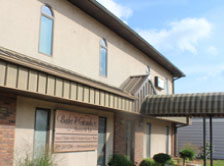
In July of 2017, Illinois introduced the Income Shares Model as a new approach to calculating child support, joining 39 other states that also use this method. The new statute’s goal is to recognize the incomes of both of the parties to reach a fair amount for the support of the children.
The amount of child support that will be paid is determined by a formula that considers the net income of each parent and the number of children who will be supported by these payments. Navigating these guidelines can be complex. Our Tazewell County child support lawyer can assist you with your child support matters, no matter the circumstances. Continue reading to learn more about how child support works in Illinois. If you have any further questions, do not hesitate to contact our firm today.
How does child support work in Illinois?
In Illinois, Child support is determined by calculating each parent’s proportionate share of available income to support a child. The support obligation is established by the calculation process. The details of this calculation process are as follows:
- The net income for both parents is determined with the child support calculator.
- The adjusted net incomes are combined which will calculate the total income available for support.
- Each parent’s individual net monthly income is divided by the combined total net income to calculate each parent’s percentage of net monthly income.
- The basic child support obligation is determined by matching where the combined adjusted net income and the number of children intersect on the chart. This is done with the Income Shares Schedule.
- The basic child support obligation amount is multiplied by each parent’s respective percentage share. This act will establish their support responsibility.
- To adjust the obligation, other costs such as health insurance, child care, extracurricular are factored in.
- The resulting obligation for the paying parent is the recommended amount of child support.
In the event each parent has care of the children for at least 146 overnights per year, the amount of child support will be further refined. This is known as shared physical care. The basic child support obligation is multiplied by 1.5 to approximate the portion of child-rearing expenses which are duplicated between the parent’s households in this situation. The percentage of time the other parent spends with the child will be multiplied by each parent’s proportional amount of the shared physical care obligation. The child support obligations are offset with the parent owing more child support paying the difference between the child support amounts to the other parent.
Contact Our Experienced Illinois Firm
At Butler, Giraudo & Meister, P.C., our divorce lawyer will help you navigate the divorce or family law matter you are facing. We provide effective and compassionate legal counsel for the following legal matters: divorce, alimony, division of marital assets, child custody, and child support. Contact us today.


